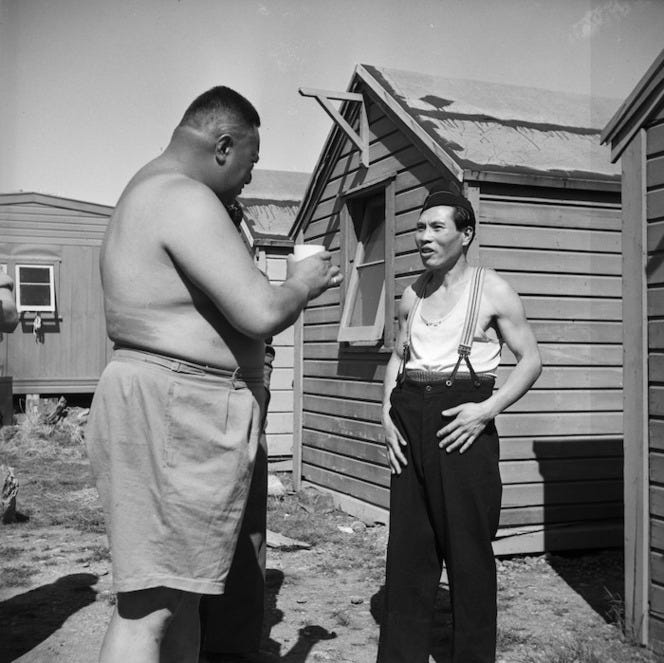During the Great War, Featherston in the southern Wairarapa, hosted a large army camp and staging post for those going off to that war. Two and a bit decades on, on 4 September 1942, ten days before the Tarawa massacre, Prime Minister Peter Fraser's cabinet agreed to turn the old base into a prisoner of war camp. They did not have much choice as the Americans, who had been based in New Zealand ahead of the Solomon Islands campaign, announced that 450 Japanese POWs would arrive in New Zealand in seven days. New Zealand would have to house them in safe custody under the Geneva Conventions. Many of the first prisoners were Japanese labour force workers who had been building an airfield on Guadalcanal. Later, as savage naval conflicts took place on Ironbottom Sound, more and more the POWs were officers and sailors.
For the Japanese military that had been fed on a diet of death before dishonour, becoming a prisoner was appalling. Some had tried to drown themselves rather than be rescued. Once taken, they never wrote home believing that in the eyes of their families they were dead anyway, of shame. Once in Featherston it seemed so much worse for the soldiers and sailors who were made to work. By February 1943 there were 240 prisoners in Featherston. The military among them refused to take part in work parties and on 25 February 1943 it came to a climax as the prisoners paraded. An armed guard of 47 men surrounded them.
Keep reading with a 7-day free trial
Subscribe to Michael Field's South Pacific Tides to keep reading this post and get 7 days of free access to the full post archives.




